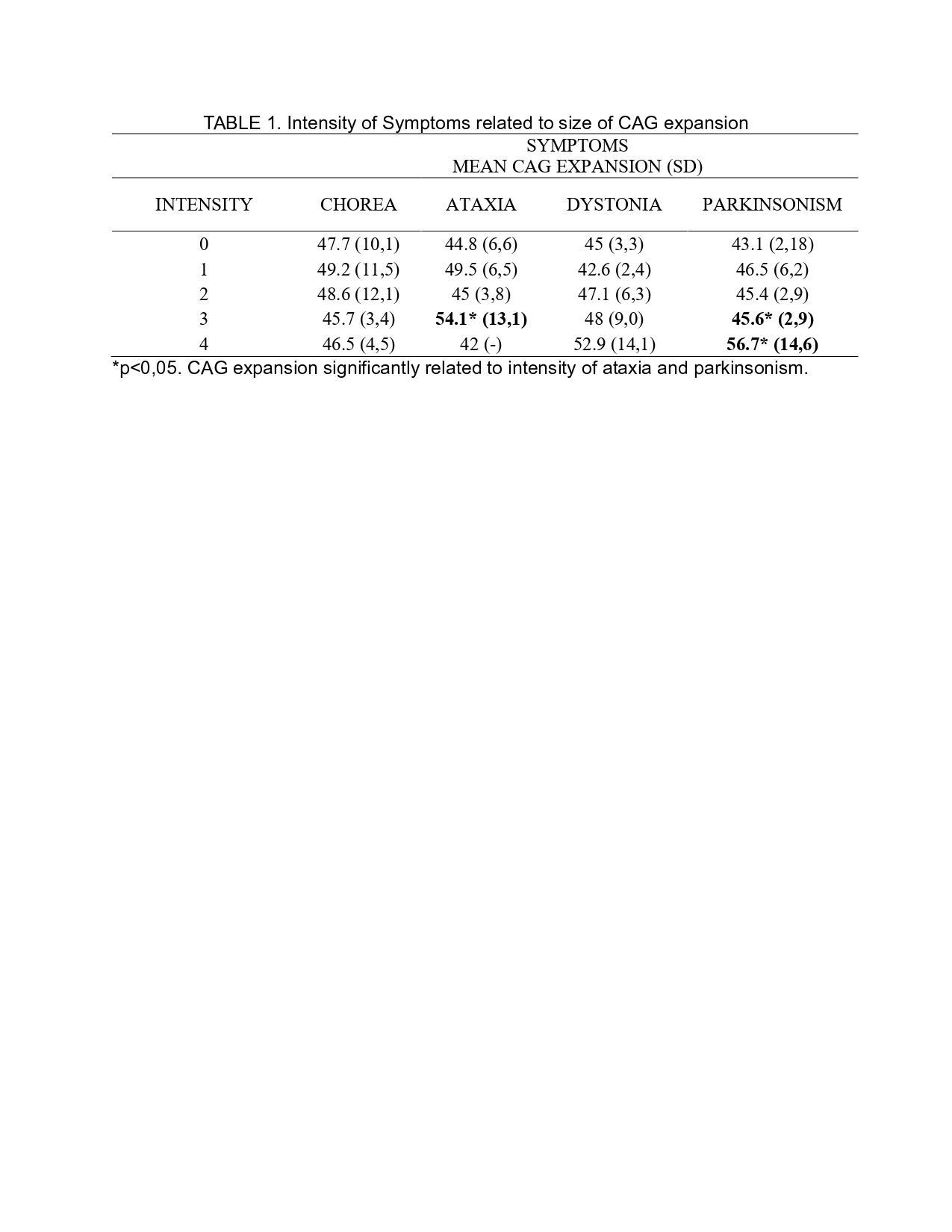Category: Huntington's Disease
Objective: We conducted genetic and clinical assessments in 22 families, with genetic diagnosis in 51 patients with HD in the state of Amazon, Brazil. The main objectives are evaluating demographics, genetic characteristics, and clinical presentations of HD in the Amazonian population.
Background: Huntington’s disease is caused by the expansion of CAG repeats in the HTT gene and exhibits wide variability in age of onset, symptomatology, and disease progression. There are no published data about genetic and clinical aspects of HD in Brazilian Amazon population.
Method: Genetic testing was performed on 51 patients exhibiting HD symptoms. Clinical assessments, including the Unified Huntington’s Disease Rating Scale (UHDRS), were conducted to evaluate motor and cognitive functions. Data on age of onset, illness duration, CAG repeat sizes, and parental transmission were collected and analyzed.
Results: Demographics:
Mean age: 44,9 years (range: 11 – 71)
Average age of first symptoms: 33.1 years (range: 6 – 62)
Average illness duration: 12,8 years
Genetic Findings:
Average size of CAG expansions: 47,4 (range: 39 – 84)
Paternal transmission confirmed in 27 patients (52,9 %)
Maternal transmission confirmed in 20 patients (39,2 %)
Clinical Presentations:
Chorea: 37 patients (72,5 %)
Parkinsonism: 36 patients (70,5 %)
Ataxia: 31 patients (60,7 %)
Dystonia: 30 patients (58,8 %)
Tics: 8 (15,6 %)
Unified Huntington’s Disease Rating Scale (UHDRS):
Average UHDRS score: 59,8 (assessed in 38 patients) (range: 7 – 120)
[Table1]
Conclusion: The study results indicate that HD in the Amazon region manifests predominantly with chorea, parkinsonism, and ataxia, aligning with previously reported clinical profiles in other populations. The observed high prevalence of chorea suggests a significant impact on motor functions, leading to a decreased quality of life for affected individuals. Additionally, the average age of onset in this population is consistent with global trends, although the relatively large CAG repeat sizes may contribute to the severity of symptoms. The more severe forms of ataxia and parkinsonism were significantly related to the size of CAG expansions.
Table 1
To cite this abstract in AMA style:
M. Della Coletta, C. Camargo, D. Brito, G. Benevides, C. Fantin, D. Cruz, M. Evangelista, F. Carvalho, M. Teles, D. Reis, E. Amaral, H. Teive. Ataxia and Parkinsonism Related with CAG Expansion Size in a Cohort of Huntington’s Disease in the Brazilian Amazon Region. [abstract]. Mov Disord. 2024; 39 (suppl 1). https://www.mdsabstracts.org/abstract/ataxia-and-parkinsonism-related-with-cag-expansion-size-in-a-cohort-of-huntingtons-disease-in-the-brazilian-amazon-region/. Accessed April 26, 2025.« Back to 2024 International Congress
MDS Abstracts - https://www.mdsabstracts.org/abstract/ataxia-and-parkinsonism-related-with-cag-expansion-size-in-a-cohort-of-huntingtons-disease-in-the-brazilian-amazon-region/

